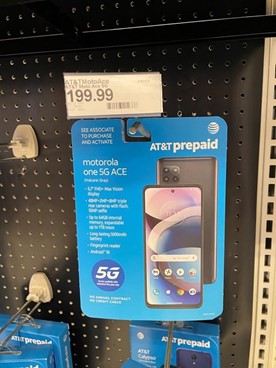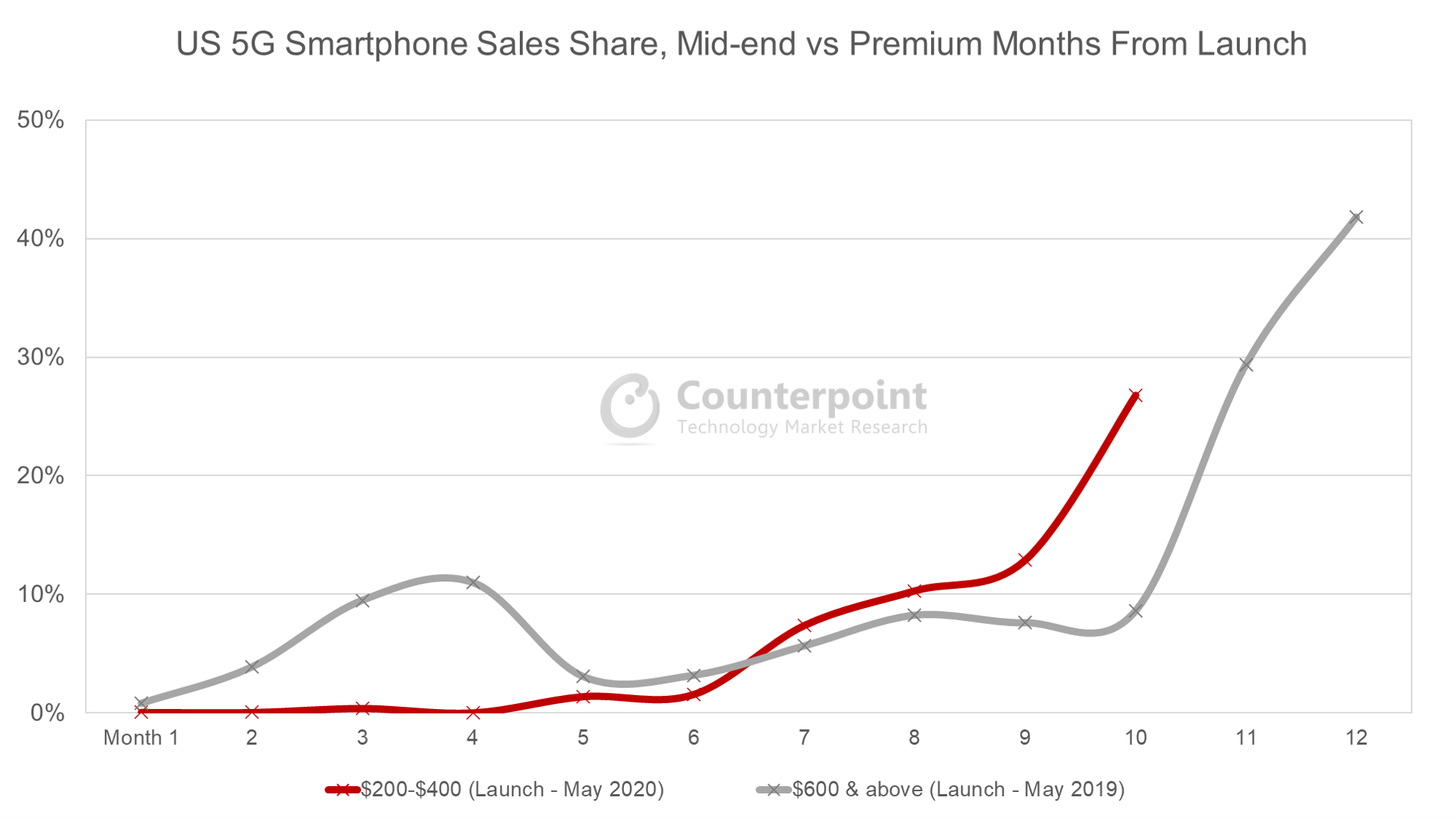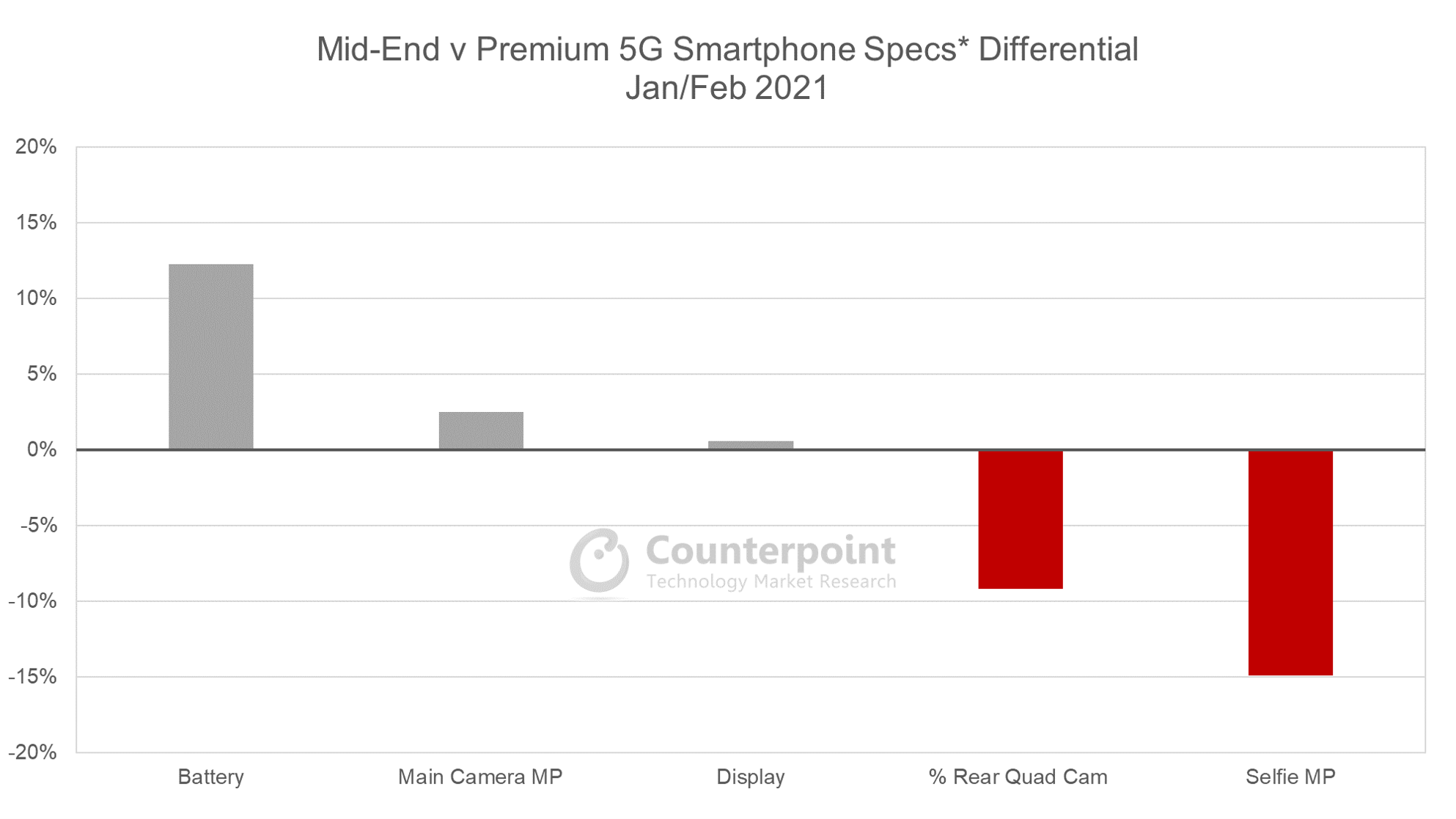Looking at the numbers, 5G is very impressive – from delivering super-fast speeds to enjoying rapid adoption. In the US, it has been the fastest amongst all radio technology gens to reach scale, accounting for over 60% of all devices shipped in the first two months of 2021.
Last weekend I spotted a sub-$200 5G device. It was prepaid, not part of any promotion, had solid features, and in stock. I was surprised enough to snap a pic and send it to my global colleagues covering the sector. Feedback was immediate and people were amazed. It took many years for 4G smartphones to reach ‘budget’ territory so seeing this just two years in, and in a market like the US, highlights how quickly technology is moving forward.
 In the past, we’ve been accustomed to seeing prime feature sets in premium only, with cheaper devices taking one or two generations to catch up. It took years for 3G and 4G chipsets to make their way into the first budget and mid-end devices, let alone reach widespread scale.
In the past, we’ve been accustomed to seeing prime feature sets in premium only, with cheaper devices taking one or two generations to catch up. It took years for 3G and 4G chipsets to make their way into the first budget and mid-end devices, let alone reach widespread scale.
This is no longer the case. Sales of mid-end 5G devices in the US started selling around Q2 2020 – just one year after the first 5G flagships became available – and began picking up pace by summer. Since September, we’ve seen the share of 5G devices in the $200-$400 price band actually surpass that of premium in terms of months-from-launch.

Our latest February sales count shows mid-end 5G share accelerating – just 10 months from initial launch. If it continues to track the premium segment, the majority of mid-end smartphones being sold in the US could be 5G by the end of next quarter.
Further bolstering mid-end 5G, there’s a good chance the fastest smartphone being sold in the US right now is not a premium flagship, but the $280 Samsung Galaxy A32 5G. Powered by MediaTek’s mid-range Dimensity 720 5G chipset which supports carrier aggregation (CA), Samsung has stated the US version of the device has a max speed of 2.34Gbps – which is faster than most fixed-line broadband connections. There are some caveats, as this figure assumes 100Mhz of bandwidth over NR TDD, but on a network like T-Mobile which supports CA, I can see how the Galaxy A32 would surpass the 1Gbps holy grail mark of super-fast speeds.
And it’s not just headline download speeds where big gains are being made. From display sizes through to camera components, lower-end 5G devices have caught up and, in some cases, offer better specs than premium 5G phones selling for three to four times more.

*Comparisons reflect ‘average’ specs calculated from total devices sold (except % Rear Quad Cam).
Our latest sales data reveals average battery capacity was significantly larger for mid-end devices, as was main camera megapixels and display sizes. The share of devices sporting rear quad cams was smaller, but with two-thirds $200-$400 devices already having four rear cameras vs 72% for premium, the difference is small.
Where we are seeing significant differences are in RAM and NAND, though mid-end vendors provide consumers with a cheaper workaround on the storage side by providing microSD card slots to supplement lower NAND capacities.
So far, 2021 is delivering great value to US 5G consumers across all segments in spite of component shortages, a potential squeeze on prepaid channels, and pandemic effects – a testament to how far, and how fast technology has advanced.

























